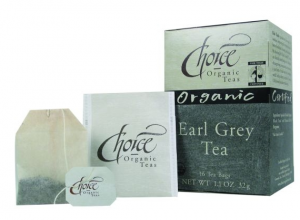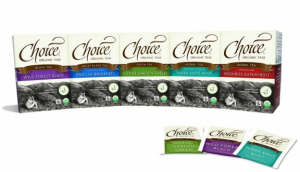Does color convey quality?
In staying up to date with the packaging world, I came across an article that I found interesting. A company called Choice Organic Teas seemed to be having a little bit of an identity crisis. Their packaging had not been changed since 1989–the complete opposite of everything we talk about!
Apparently, as a result, the company was receiving a worrying compliment from consumers–”They were surprised to find out how good our tea tasted,”says Anne-Marie Phillips, head of sales and marketing. Judging by this feedback, clearly consumers would be hooked to the product once they tried it but with such outdated packaging.–HOW would they get consumers to try it?
As with any redesign, capturing a new market without decreasing the current market creates a challenge. In this case, research showed that loyal customers were very familiar with the brand’s packaging–to the point that some of them couldn’t remember the brand name and identified the teas solely by the packaging–not exactly the ideal brand recognition. Another major roadblock that the company was learning was that consumers never referred to the brand by its full name. People referred to their product as “Choice” when the full name is actually “Choice Organic Teas.” This differentiation was a key goal in the refresh.
OLD: When you look at the old and the new packaging some of the major design elements remained. Elements such as:
• large logo area with its white background
• the use of color-coding at the middle and bottle of the carton to identify each variety.
However, other parts of the package design were not working so well. One key problem area was the amount of copy. “We had the word ‘organic’ listed three times on our box and yet it still wasn’t really getting conveyed,” Phillips says, incredulously.
Solution: changing the color of the certified organic logo from black to green.
NEW: Even though some of the original design elements stayed the same, the new design has a few highlights:
• caffeine indicator graphic and an origins map.
• new illustration of tea leaves, on the front panel
• each variety is identified by a richly colored banner that describes the tea type (previously each tea type was called out in a black band)
Color is more prominent throughout the complete redesign. The old cartons were printed using spot color inks only. Now, a KBA Rapida press prints the clay-coated paperboard in four-color process plus one spot color. The process inks create jewel tones that are vibrant and contemporary, and the one spot color optimizes legibility of small type by preventing print registration problems.
The design changes carry through to inside the carton, where Choice Organic Teas replaced its black-and-white universal tea envelope to variety-specific envelopes printed in three spot colors. The envelope paper is an oxygen-whitened stock that, along with the carton’s 100% recycled/65% post-consumer-waste paperboard, helped Choice Organic Teas win this year’s Responsible Packaging Award from the Food Trade Sustainability Association. (source)


